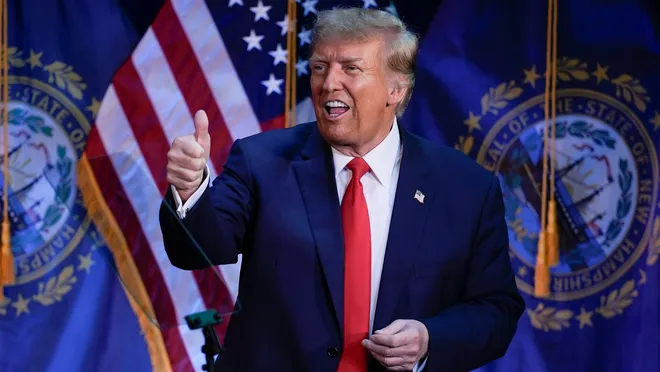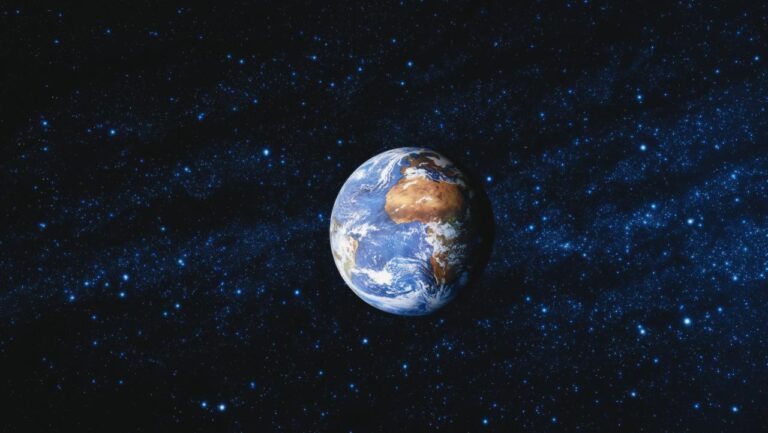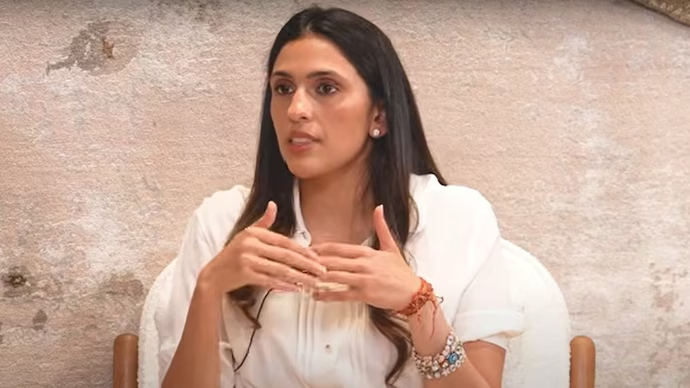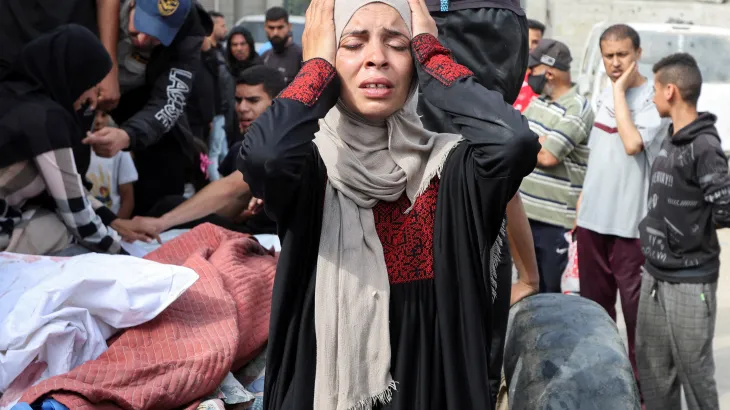Trump Slaps 25% Tariff on India—Cites Russia Ties and ‘Ungrateful’ Snub Over Ceasefire Claim!
On July 30, 2025, US President Donald Trump announced via his Truth Social platform that the United States will impose a 25% tariff on all goods imported from India, effective August 1, 2025. Additionally, India will face an unspecified “penalty” due to its continued purchases of Russian military equipment and energy resources, particularly oil, amidst the ongoing Russia-Ukraine conflict. This announcement follows months of stalled trade negotiations between the US and India, with Trump citing India’s high tariffs and restrictive trade barriers as major impediments to bilateral commerce. The move has sparked concerns about economic repercussions for India, potential strain on US-India relations, and its broader implications for global trade dynamics. Furthermore, underlying tensions related to India’s refusal to acknowledge Trump’s claimed role in brokering a ceasefire between India and Pakistan in May 2025 appear to have influenced this decision, though Trump has not explicitly addressed this grievance.
Background on US-India Trade Relations
The US and India have a significant but complex trade relationship, with total bilateral trade in goods reaching approximately $129.2 billion in 2024, making India the US’s 10th largest trading partner. However, the US has consistently run a trade deficit with India, estimated at $45.8 billion in 2024, driven by imports of pharmaceuticals, telecommunications equipment, gems, jewelry, and textiles. India, in turn, imports aircraft, natural gas, and agricultural products from the US. Despite the strategic importance of their partnership—bolstered by shared interests in counterbalancing China’s influence in the Indo-Pacific—trade negotiations have been fraught with challenges.
India maintains high tariffs, averaging around 12%, and imposes stringent non-tariff barriers, such as import-quality requirements and digital service taxes, which the US considers “burdensome” and “obnoxious.” These policies have limited US market access, particularly in India’s agriculture and dairy sectors, which remain politically sensitive due to their impact on millions of Indian farmers. The US has sought greater market access for its agricultural products, including wheat, corn, rice, and genetically modified soybeans, but India has resisted, citing food security and the livelihoods of its small-scale farmers.
In April 2025, Trump announced a 26% tariff on Indian goods as part of his “Liberation Day” trade policy, aimed at enforcing reciprocity in global trade. This tariff was temporarily paused to allow negotiations, but the failure to reach a deal by the August 1 deadline prompted the reinstatement of a slightly reduced 25% tariff, accompanied by an additional penalty.
Trump’s Tariff Announcement
In his Truth Social post, Trump outlined the rationale for the tariffs and penalty, stating:
“While India is our friend, we have, over the years, done relatively little business with them because their Tariffs are far too high, among the highest in the World, and they have the most strenuous and obnoxious non-monetary Trade Barriers of any Country. Also, they have always bought a vast majority of their military equipment from Russia, and are Russia’s largest buyer of ENERGY, along with China, at a time when everyone wants Russia to STOP THE KILLING IN UKRAINE — ALL THINGS NOT GOOD! INDIA WILL THEREFORE BE PAYING A TARIFF OF 25%, PLUS A PENALTY FOR THE ABOVE, STARTING ON AUGUST FIRST. THANK YOU FOR YOUR ATTENTION TO THIS MATTER. MAGA!”
The 25% tariff applies to all Indian exports to the US, including key sectors like pharmaceuticals, textiles, auto parts, and petrochemicals. The additional penalty, though unspecified, is linked to India’s defense and energy ties with Russia. White House economic adviser Kevin Hassett indicated that further details on the penalty would be provided “shortly,” suggesting it could involve secondary sanctions or targeted measures against specific Indian industries.
Trump’s announcement came just days after he hinted at a possible 20-25% tariff rate, indicating frustration with the slow progress of trade talks. The decision to impose a 25% tariff—higher than the 15% applied to Japan and the European Union but lower than the 30% imposed on China—reflects India’s strategic importance as a US partner, balanced against Trump’s desire to address trade imbalances and geopolitical concerns.
India’s Ties with Russia and the Ukraine Conflict
A significant factor in Trump’s decision is India’s continued economic and military engagement with Russia, particularly its purchase of Russian oil and weapons. India has emerged as one of Russia’s largest energy buyers, alongside China, with reports indicating that 35% of India’s oil imports in the first half of 2025 came from Russia. This has been a point of contention for the US, which has sought to isolate Russia economically due to its invasion of Ukraine. The US has pressured countries to reduce their reliance on Russian energy and military equipment, with US Senator Lindsey Graham warning in July 2025 that countries like India, China, and Brazil could face 100% tariffs for continuing to purchase Russian oil.
India’s defense ties with Russia are equally significant, with a substantial portion of its military equipment, including fighter jets, tanks, and missile systems, sourced from Russia. These ties, dating back to the Cold War, have made India a key market for Russian arms, even as Western nations push for sanctions against Moscow. Trump’s reference to “everyone wants Russia to STOP THE KILLING IN UKRAINE” underscores his frustration with India’s neutral stance in the Russia-Ukraine conflict, which contrasts with the US’s efforts to rally global support against Russia.
The India-Pakistan Ceasefire Controversy
An underlying but less openly discussed factor in Trump’s tariff decision is India’s refusal to acknowledge his claimed role in brokering a ceasefire between India and Pakistan in May 2025. During a brief four-day conflict, Trump repeatedly claimed—nearly 30 times, according to some reports—that he personally intervened to secure a ceasefire. However, Indian Prime Minister Narendra Modi has firmly denied these claims, stating that India has never accepted and will never accept mediation in its disputes with Pakistan. This public rebuttal appears to have irritated Trump, who has not directly addressed this issue in his tariff announcement but is reportedly frustrated by India’s stance.
The ceasefire episode highlights a broader tension in US-India relations. While Trump has described India as a “friend” and praised its strategic importance, his administration has been irked by India’s independent foreign policy, particularly its refusal to align fully with US geopolitical objectives. The tariff announcement and additional penalty can be seen as a means of exerting pressure on India, not only for trade reciprocity but also for its perceived lack of gratitude for Trump’s diplomatic efforts.
India’s Response
The Indian government responded cautiously to Trump’s announcement, with the Ministry of Commerce and Industry stating that it is “studying the implications” of the 25% tariff and additional penalty. The ministry emphasized India’s commitment to a “fair, balanced, and mutually beneficial bilateral trade agreement” and affirmed that it would take “all steps necessary to secure our national interest.” Indian officials have indicated that trade negotiations will continue, with a US delegation expected in New Delhi by late August for a sixth round of talks.
Indian political and business leaders expressed concern over the tariff’s potential impact. Congress MP Rajiv Shukla called the move a “wrong step” that would harm Indian businessmen, while UBT Sena MP Priyanka Chaturvedi questioned why Prime Minister Modi and Finance Minister Nirmala Sitharaman failed to anticipate this “unilateral decision.” The Federation of Indian Chambers of Commerce and Industry (FICCI) expressed disappointment, noting that the tariff would affect export-intensive sectors like textiles, footwear, and furniture, potentially rendering them uncompetitive against rivals from Vietnam and China.
Analysts warn that the tariff could weaken the Indian rupee, potentially pushing it past ₹87 per US dollar, and exacerbate capital outflows. However, some experts, such as those from HDFC Bank, argue that India’s resilient domestic demand and relatively low trade surplus with the US ($50 billion compared to China’s $320 billion) may mitigate the economic impact.
Economic Implications
The 25% tariff is expected to significantly affect India’s export market, particularly in sectors like pharmaceuticals, telecom instruments, gems, jewelry, and petrochemicals, which accounted for $87 billion in exports to the US in 2024. The inclusion of pharmaceuticals, a major Indian export, could lead to a substantial trade deficit if additional tariffs are imposed. Companies like Apple, which rely on India as an export hub for iPhones, may face disruptions, according to IDC India.
The unspecified penalty adds further uncertainty. If it involves secondary sanctions or targeted measures against India’s energy or defense sectors, it could complicate India’s economic strategy, particularly its reliance on affordable Russian oil to manage inflation. The Indian rupee fell 0.4% to around 87.80 against the US dollar following the announcement, reflecting market concerns.
However, India’s diversified export markets and strong domestic demand may cushion the blow. Unlike China or Vietnam, which face higher tariffs (30% and 20%, respectively), India’s tariff rate is relatively moderate, and ongoing negotiations could lead to a resolution by September or October 2025.
Geopolitical Context
Trump’s tariff policy is part of a broader “reciprocal tariffs” initiative aimed at reducing US trade deficits and reshaping global trade. Since April 2025, the US has imposed tariffs on multiple countries, including a 25% tariff on Australian steel and aluminum and a 17% tariff on Israeli goods. Countries like Japan, the EU, and the Philippines have secured lower tariffs (15-19%) through negotiated deals, highlighting India’s failure to finalize an agreement as a key factor in its higher tariff rate.
The tariff announcement also reflects Trump’s frustration with the slow progress of global trade talks and his desire to pressure countries into compliance with US demands. The additional penalty on India for its Russia ties aligns with his recent ultimatum to Moscow to achieve peace in Ukraine, underscoring the intersection of trade and geopolitics in his policy approach.
India’s Strategic Dilemma
India faces a delicate balancing act. Its refusal to open its agriculture and dairy sectors has been a sticking point in trade talks, as these sectors are critical to the livelihoods of millions of farmers. At the same time, India values its strategic partnership with the US, particularly as a counterweight to China. The tariff and penalty could strain this relationship, especially if perceived as punitive for India’s neutral stance on Russia and its rejection of Trump’s ceasefire claims.
Indian officials remain optimistic about reaching a comprehensive trade agreement by autumn 2025, but the August 1 deadline has heightened tensions. The upcoming visit of a US trade delegation in late August will be critical in determining whether the tariffs are temporary or a long-term setback.
Conclusion
President Trump’s announcement of a 25% tariff on Indian goods, coupled with an unspecified penalty for India’s trade with Russia, marks a significant escalation in US-India trade tensions. While ostensibly driven by trade imbalances and India’s ties with Russia, the decision also appears influenced by Trump’s unacknowledged frustration over India’s denial of his role in the India-Pakistan ceasefire. The tariff threatens India’s export-driven sectors and could weaken the rupee, but India’s resilient domestic economy and ongoing negotiations offer hope for a resolution. As both nations navigate this complex landscape, the outcome of the August trade talks will be pivotal in shaping the future of US-India economic and strategic relations.
You Might Also Like:
Imran Reza Ansari Faces Backlash Over Alleged Remarks on Sahaba; Denies Insult
Brutal Honour Killing in Balochistan Sparks Outrage After Video Goes Viral; 15 Booked
Prince Alwaleed bin Khaled, Saudi Arabia’s “Sleeping Prince,” Passes Away After Nearly 20






